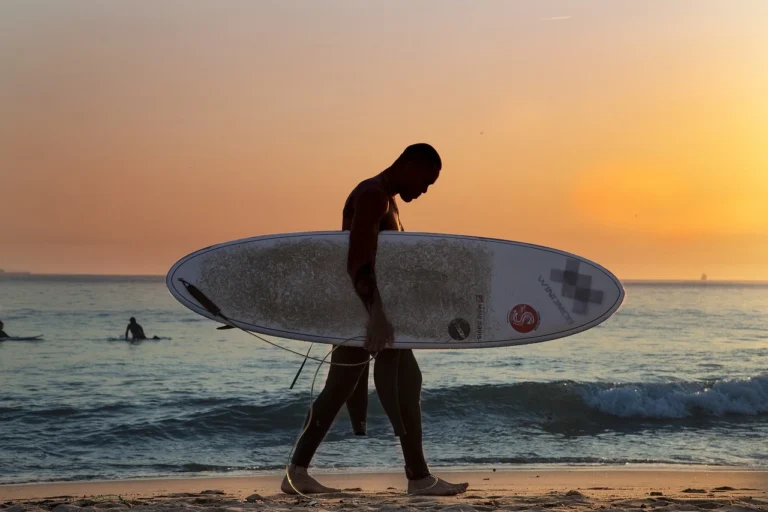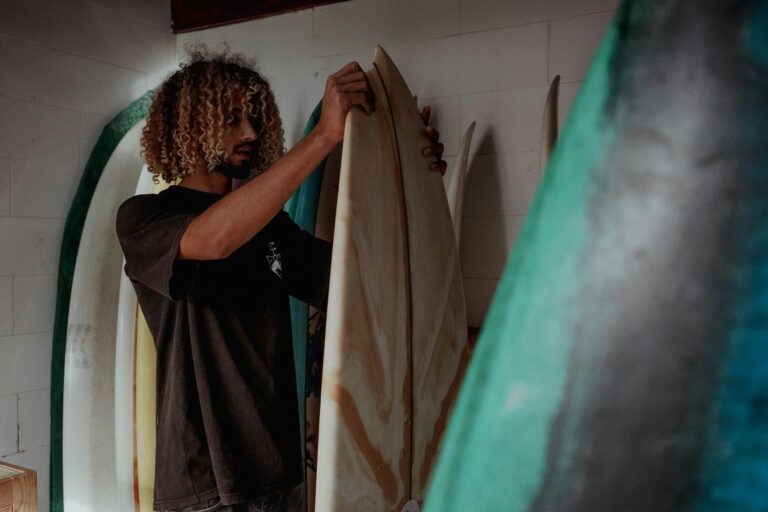Are you ready to ride the waves and experience the thrill of surfing for the first time? Surfing is an incredible sport that combines physical activity with a deep connection to the ocean. However, it can also be challenging when you’re just starting. With these beginner surfing tips, you’ll feel more confident as you step onto your board for the first time. Let’s dive in!
1. Choose the Right Surfboard
One of the most critical decisions as a beginner surfer is picking the right surfboard. Bigger boards, like soft-top longboards, are more stable and buoyant, making them ideal for learning. Avoid smaller boards or advanced designs for now—they’re harder to balance and maneuver. The goal is to focus on stability and ease of catching waves.
2. Pick the Right Spot
Not all surf spots are beginner-friendly. Look for beaches with gentle, rolling waves and sandy bottoms. Avoid areas with strong currents, rocky shorelines, or large waves. Popular beginner-friendly surf spots often have surf schools or other learners in the water, creating a supportive environment for you to practice.
3. Learn Basic Surfing Etiquette
Understanding surfing etiquette is crucial for your safety and the safety of others in the water. For instance:
- Don’t drop in: Wait your turn and don’t catch a wave someone else is already riding.
- Respect the locals: Be polite and respectful to experienced surfers.
- Keep your distance: Maintain enough space between you and others to avoid collisions. By following these basic rules, you’ll enjoy a more harmonious surfing experience.
4. Practice Paddling
Paddling is the foundation of surfing. If you can’t paddle effectively, catching waves will be much harder. Lie flat on your board and use smooth, alternating strokes with your arms. Practice this on flat water before heading into the waves. Remember, strong and efficient paddling will help you catch more waves and avoid getting caught in the whitewater.
5. Master the Pop-Up
The pop-up is the move that transitions you from lying on your board to standing up. To practice:
- Lie flat on your board, hands placed under your shoulders.
- Push your chest up while bringing your back foot to the center of the board.
- Swiftly plant your front foot and stand up in a low, balanced stance. Practicing the pop-up on dry land can build muscle memory, making it easier to perform in the water.
6. Understand Wave Selection
Not all waves are worth riding. As a beginner, look for smaller, slower waves that are less intimidating. Avoid waves that break too steeply or too close to the shore. Observing the waves before paddling out can help you identify the best ones to ride.
7. Start in the Whitewater
When you’re just starting, it’s best to practice in the whitewater—the foamy part of a wave after it has broken. Whitewater waves are gentler and easier to catch, giving you more opportunities to practice your balance and pop-up without the challenge of timing unbroken waves.
8. Focus on Your Stance
A stable stance is crucial for maintaining balance on your surfboard. Here’s how to position yourself:
- Keep your feet shoulder-width apart.
- Bend your knees slightly to absorb motion.
- Look ahead, not down at your feet. Your stance will determine your ability to control the board, so take time to get it right.
9. Watch and Learn
Spend time observing experienced surfers before hitting the water. Watching how they paddle, position themselves, and ride waves can provide valuable insights. You can also learn by watching surf tutorials online or taking lessons from qualified instructors. Surf schools are particularly helpful for beginners, as they provide guidance and tailored tips for improving your technique.
10. Be Patient and Persistent
Surfing is a challenging sport that takes time to master. Don’t get discouraged if you fall repeatedly—it’s all part of the process. Celebrate small victories, like catching your first wave or staying on your board for a few seconds longer. The more time you spend in the water, the more comfortable and skilled you’ll become.
Bonus Tip: Always Prioritize Safety
Your safety in the water should always come first. Here are a few quick safety reminders:
- Wear a leash to keep your board attached to you.
- Use sunscreen to protect your skin from UV rays.
- Check the surf conditions and weather before heading out.
- Stay hydrated and know your limits.
Conclusion
Starting your surfing journey is an exciting adventure, but it’s important to approach it with preparation and patience. By following these beginner surfing tips, you’ll build the skills and confidence needed to enjoy your time in the waves. So grab your board, head to a beginner-friendly beach, and get ready to experience the joy of surfing!






